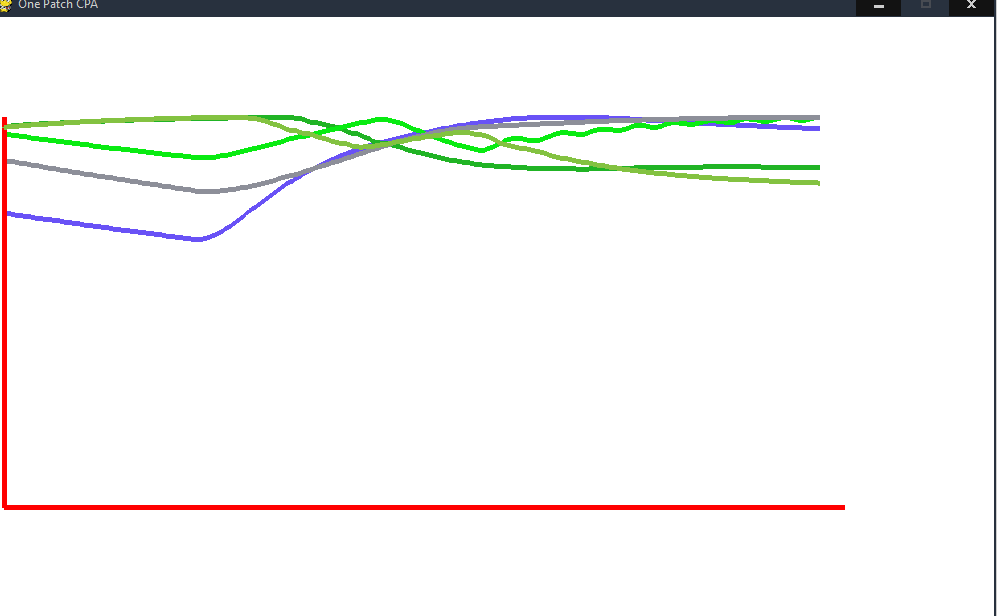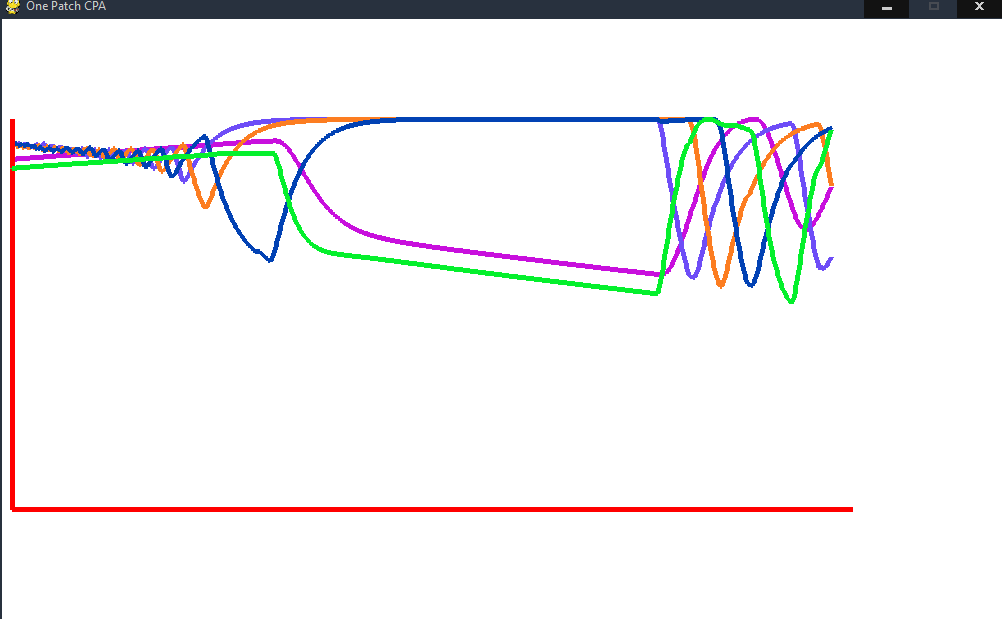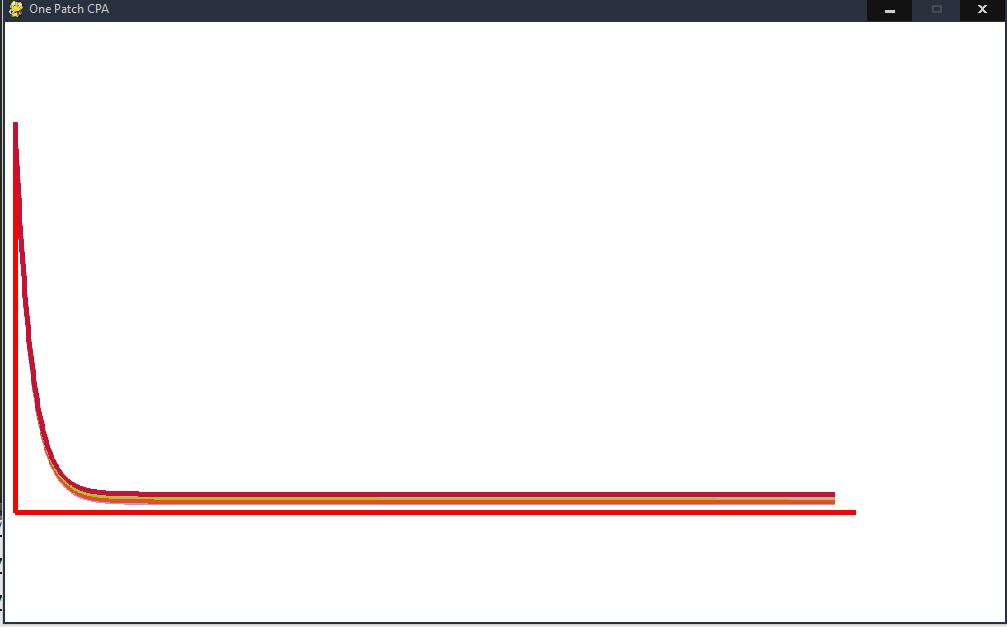There needs to be quite a lot of timesteps between each auto-evo to make sure the true state of the system merges away from the initial conditions. At the moment my computer can do 1000 timesteps (which I think should be enough) in 16 seconds, so that’s reasonable I guess (my computer is kinda old but not a potato). That’s how long the player will have to wait while the computation is done. Really it would be better to have 10,000 timesteps however that’s quite long.
I think it will be sped up a lot with c++ and multi-threading. I think we might be able to do something clever where the computation is done in the background while the player is swimming around. However this is for 1 patch with 5 species in it (granted it’s copied 5 times by auto-evo so it’s really like 5 patches). I imagine we would want 20+ species per patch and 20+ patches? Which is a big step up in the amount of computation (especially because predation is run for each species in relation to each other and so grows exponentially with the number of species).
Anyway I guess we won’t know how fast it’ll be before we build it in c++. Also the player can calibrate it for their own computer by changing the number of species per patch and number of patches. I guess if you’ve got a potato you’re gonna be living in a small world.
Today I added a mechanism to give the faster species a discount when it is the prey (because it can choose to run away) which finally gives flagella a meaning. Here’s a run (with 1000 timesteps between auto-evos and note none of them have collapsed down to 2 organelles).
From this
Current State: F = Flagella, A = Agents, P = Pilli, C = Chloroplast, T = Total number of organelles:
F : 0 A : 3 P : 1 C : 0 T : 8 .
F : 1 A : 3 P : 1 C : 3 T : 22 .
F : 2 A : 1 P : 1 C : 5 T : 16 .
F : 0 A : 2 P : 1 C : 1 T : 9 .
F : 3 A : 5 P : 1 C : 2 T : 19 .
to this
Current State: F = Flagella, A = Agents, P = Pilli, C = Chloroplast, T = Total number of organelles:
F : 0 A : 4 P : 1 C : 0 T : 7 .
F : 1 A : 5 P : 1 C : 0 T : 14 .
F : 2 A : 1 P : 1 C : 3 T : 10 .
F : 0 A : 4 P : 0 C : 0 T : 7 .
F : 1 A : 4 P : 0 C : 1 T : 10 .
I’m sad by how little it values chloroplasts. Maybe predation is too strong or something.
Here’s another run, with predation turned down (there’s parameters for changing the strength of predation and how much discount speed gives you). This was 100 auto-evos with 1000 time steps between them (took 26 minutes).
Current State: F = Flagella, A = Agents, P = Pilli, C = Chloroplast, T = Total number of organelles:
F : 1 A : 0 P : 1 C : 0 T : 7 .
F : 1 A : 4 P : 6 C : 1 T : 21 .
F : 1 A : 1 P : 1 C : 1 T : 7 .
F : 2 A : 2 P : 2 C : 6 T : 21 .
F : 1 A : 2 P : 1 C : 1 T : 13 .
to
Current State: F = Flagella, A = Agents, P = Pilli, C = Chloroplast, T = Total number of organelles:
F : 1 A : 0 P : 0 C : 0 T : 4 .
F : 1 A : 2 P : 0 C : 0 T : 5 .
F : 2 A : 0 P : 2 C : 1 T : 7 .
F : 1 A : 0 P : 0 C : 1 T : 5 .
F : 1 A : 2 P : 1 C : 0 T : 6 .
Interesting how this time it reduced the amount of agent glands and pilli to reflect the lowered effectiveness of predation. Again not so sure why it’s so keen on getting rid of chloroplasts, maybe 2 is enough to fund 5 species with sugar. I guess plants make sugar for themselves and for us.
Also note how the species are all quite small. I think this is because they want to be fast (speed = number of flagella / number of organelles) and it’s easier to reproduce if you are made of less stuff. However it would be nice to find a way of getting bigger cells to emerge. Looking at the list of organelles (because I turned off hydrogen sulphide) there are only 4 options, Cytoplasm, Chloroplast, Mitochondria and Lysosomes. And you don’t really need Mitochondria or Lysosomes, they only break things down.
Anyway I ran it again with a more comprehensive readout.
Current State: F = Flagella, A = Agents, P = Pilli, C = Chloroplast, Y = Cytoplasm, L = Lysosomes, M = Mitochondria, T = Total number of organelles:
F : 0 A : 2 P : 0 C : 0 Y : 2 L : 1 M : 2 T : 13 .
F : 1 A : 0 P : 0 C : 0 Y : 2 L : 0 M : 1 T : 7 .
F : 3 A : 2 P : 1 C : 1 Y : 2 L : 1 M : 2 T : 17 .
F : 1 A : 3 P : 1 C : 0 Y : 1 L : 0 M : 1 T : 8 .
F : 0 A : 0 P : 1 C : 0 Y : 1 L : 0 M : 3 T : 10 .
to this
Current State: F = Flagella, A = Agents, P = Pilli, C = Chloroplast, Y = Cytoplasm, L = Lysosomes, M = Mitochondria, T = Total number of organelles:
F : 0 A : 2 P : 0 C : 1 Y : 1 L : 0 M : 0 T : 5 .
F : 0 A : 1 P : 0 C : 0 Y : 1 L : 0 M : 0 T : 3 .
F : 0 A : 1 P : 0 C : 0 Y : 1 L : 0 M : 0 T : 3 .
F : 1 A : 0 P : 0 C : 0 Y : 1 L : 0 M : 0 T : 3 .
F : 0 A : 0 P : 1 C : 0 Y : 1 L : 0 M : 1 T : 4 .
As you can see the cells totally ditch lysosomes and mitochondria. I guess the cost of making them is much more than their usefulness, which should prolly be changed.
Overall I’m pretty happy with how it’s working right now.
Edit: Lame. I ran it for 500 auto evos of 1000 steps (which took like 2 hours) and they all just fell down to nothing.
Current State: F = Flagella, A = Agents, P = Pilli, C = Chloroplast, Y = Cytoplasm, L = Lysosomes, M = Mitochondria, T = Total number of organelles:
F : 0 A : 0 P : 1 C : 0 Y : 1 L : 0 M : 0 T : 3 .
F : 0 A : 0 P : 0 C : 0 Y : 1 L : 0 M : 0 T : 2 .
F : 0 A : 1 P : 0 C : 0 Y : 1 L : 0 M : 0 T : 3 .
F : 0 A : 0 P : 0 C : 0 Y : 1 L : 1 M : 0 T : 3 .
F : 0 A : 0 P : 0 C : 0 Y : 1 L : 0 M : 0 T : 2 .
Here is an obligatory pop-dynamicy image.
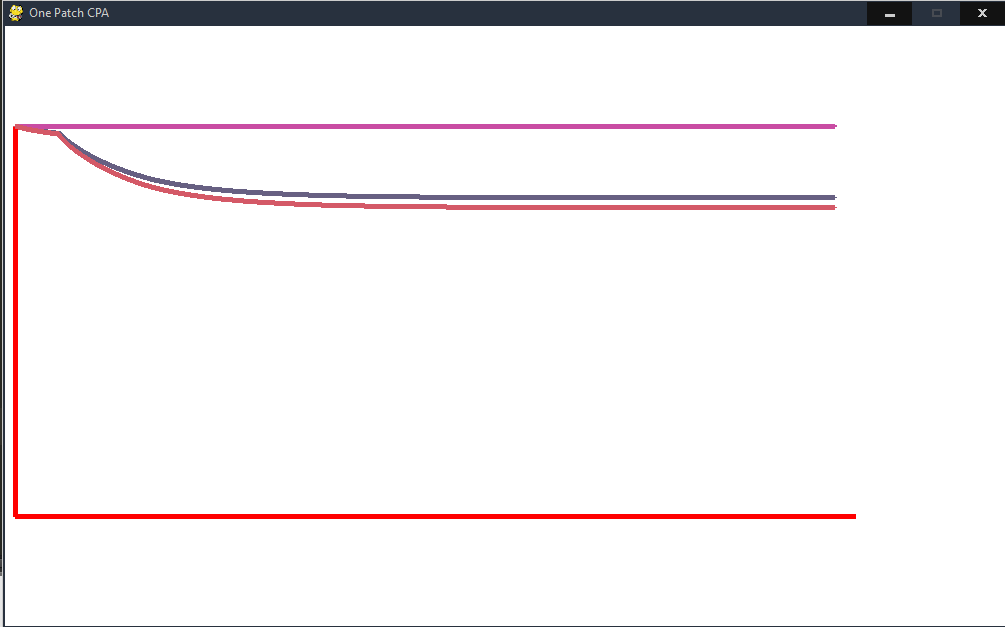
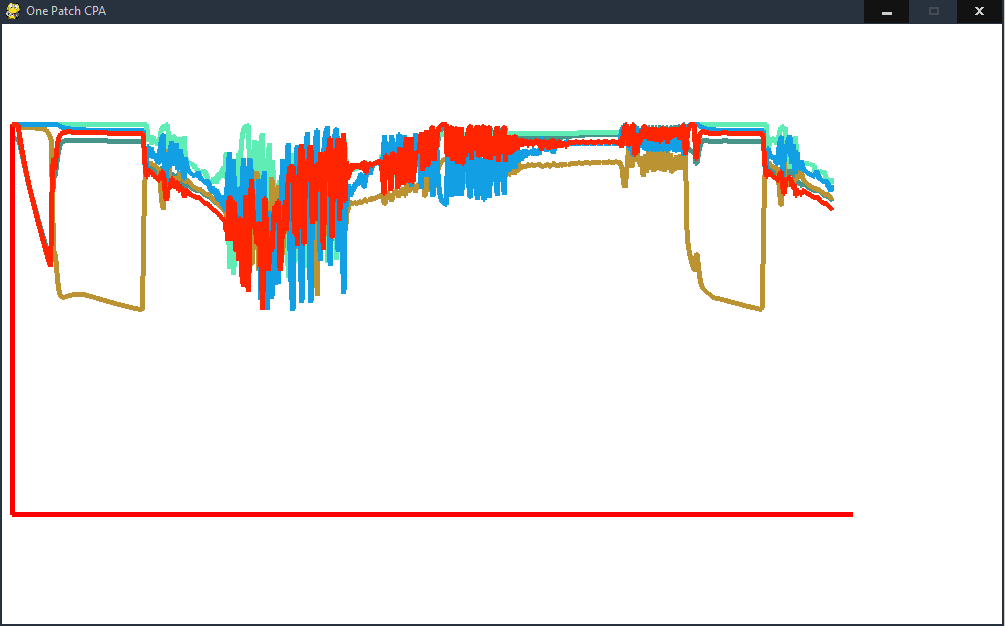

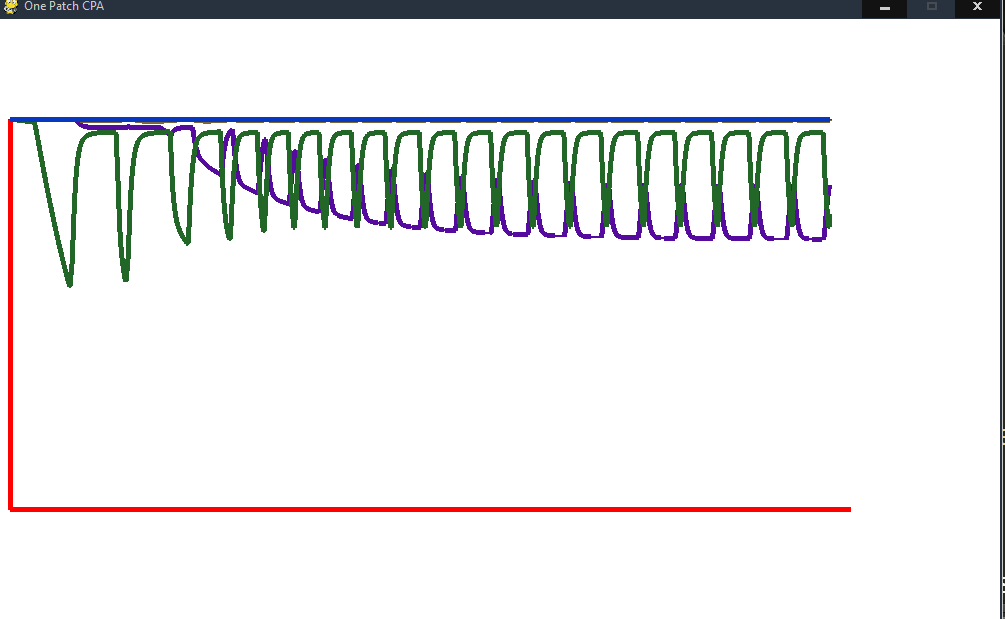
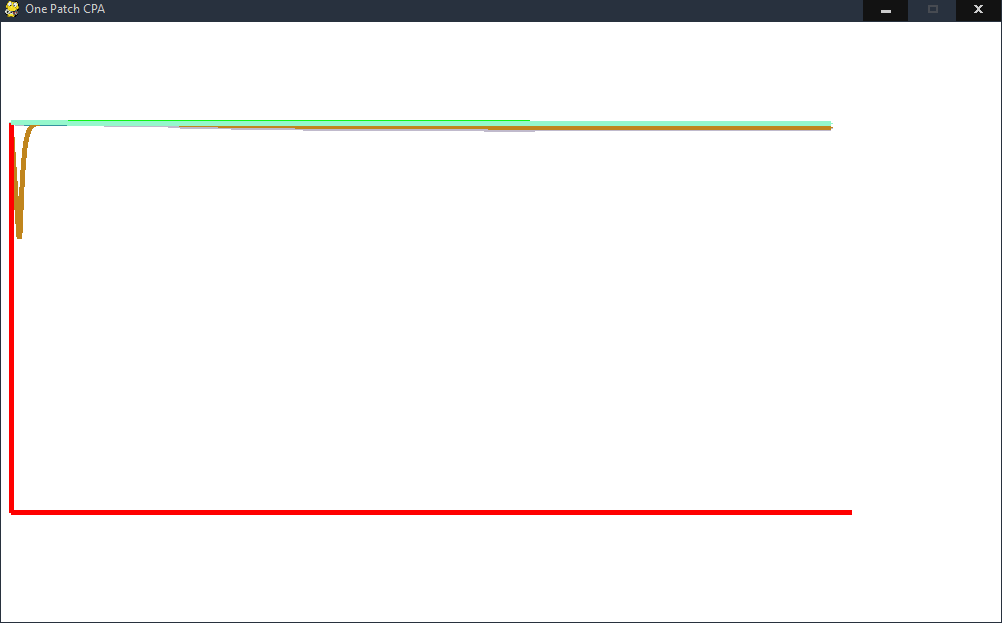
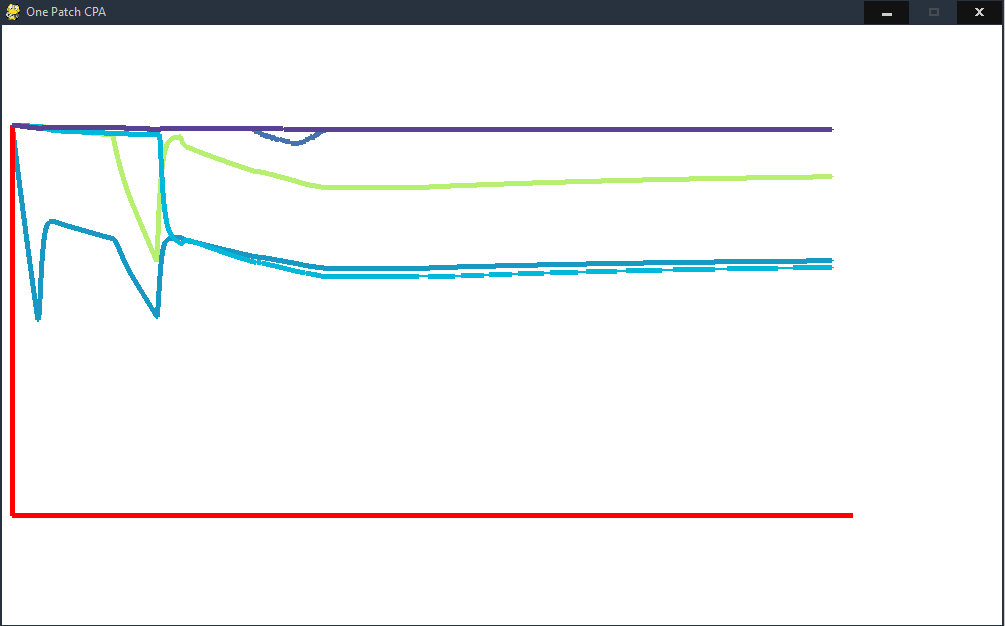
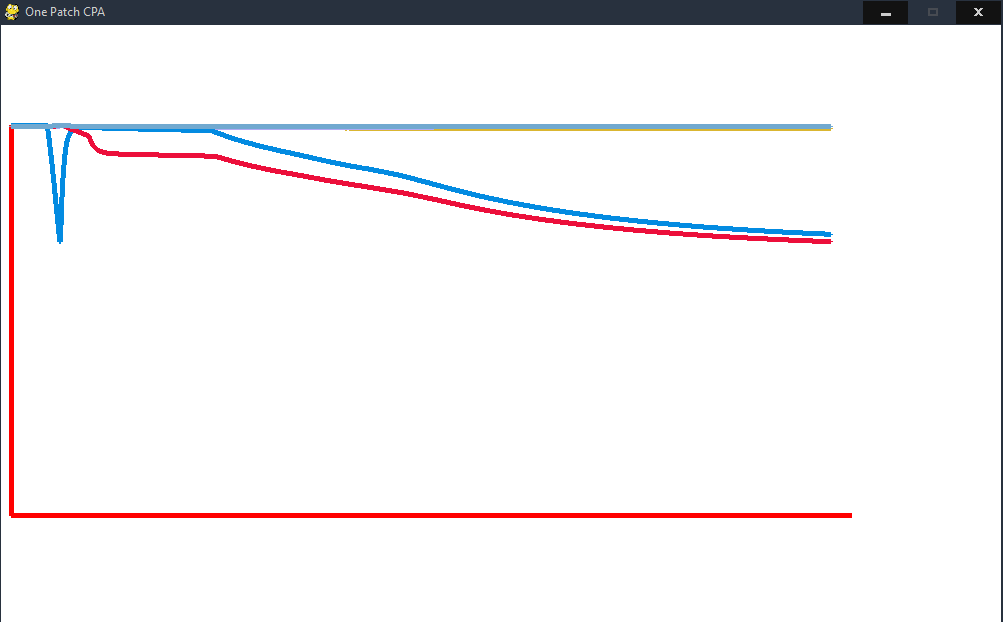

 ATM there is no real penalty to being big and no advantage to being fast (so all flegella do is burn energy for nothing). I’m hoping that if I make it advantageous to be fast then they will be given more flagella. There may also need to be a function which spills agent continually from each agent gland (as otherwise they are not really penalised enough).
ATM there is no real penalty to being big and no advantage to being fast (so all flegella do is burn energy for nothing). I’m hoping that if I make it advantageous to be fast then they will be given more flagella. There may also need to be a function which spills agent continually from each agent gland (as otherwise they are not really penalised enough).